One reason I’ve stuck with this whole blogging gig for nearly a decade now is the talented, passionate people I’m lucky enough to meet along the way. I’ve profiled many on da blog over the years (you can check a lot of them out here) and my latest discovery is no exception. As I finally weaned myself from fast fashion (thanks pregnancy!) and have committed myself to a more long-term view of my closet, I like to look for people who are doing really cool things with fashion. The local Bay Area clothing line Eight + Sand – a collection of impeccably tailored basics such as T-shirts, hoodies and button-down shirts – is doing wonderful things in spades. Things like turning how women’s clothing is measured and made on its head. Like sourcing sustainable fabrics that don’t fall apart with the first wash. Like making everything locally. Like jumping into an industry they knew nothing about because they wanted to follow a dream. I recently visited Hawthorne boutique in Oakland to meet Eight + Sand founders Noushie and Ronda to learn all about their journey to create the perfect shirt.
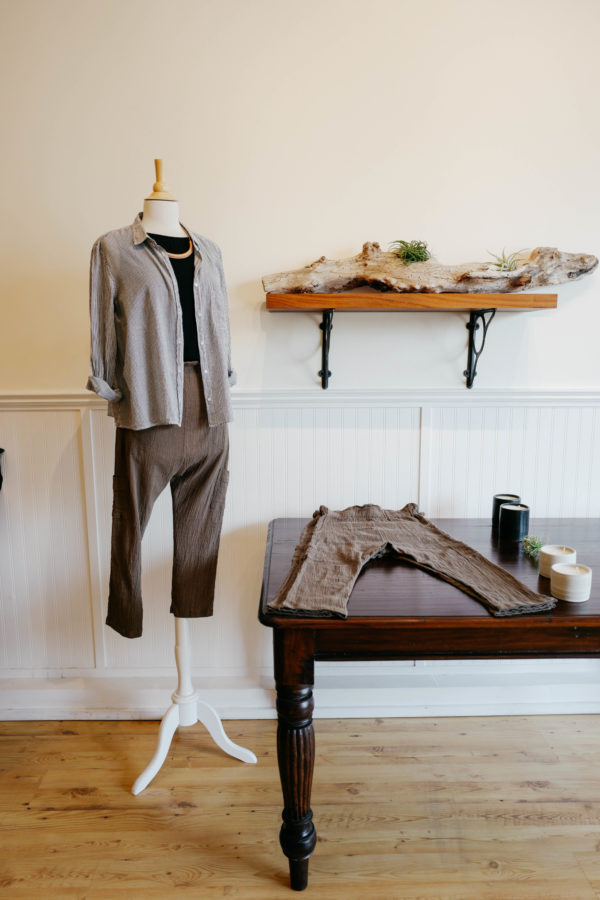
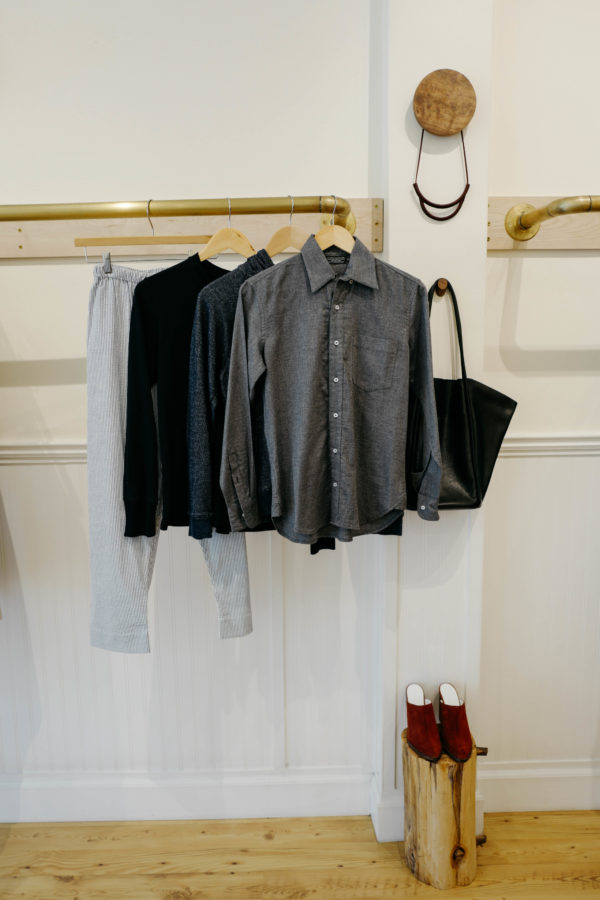
How did you get started in the apparel business?
Everything we do grew out of a real need that we, or friends of ours, had. We were living in the Bay Area, surrounded by gorgeous, local food prepared slowly, by local wines and craft beers and so much attention to source and ways of making that it was almost cliché, and yet the clothing we were all buying was falling apart after a few washes. We were all going to the same stores, buying the same stuff: made overseas in terrible conditions, treated with dangerous chemicals, produced at dizzying rates, and worst of all, filling up the landfills with waste. Even among people who really participated in monitoring their footprint in other ways— what they eat, the car they drive, who they vote for— clothing was a total blind spot. We were like, “What is wrong with this picture?” So we walked away from our old careers and started building Eight + Sand, hell-bent on doing things differently, on offering people something obsessively sourced, painstakingly crafted, super durable, and totally classic; something where every step of the process, every hand than participated in it, is known and honored.


What do they think really sets the line apart?
Two big things: One, while there are a few companies gesturing at the idea of the problems we mentioned above, very few people are tackling all of the components. Say, they’re making inroads in terms of educating consumers about the true cost of what they buy but not working with truly exceptional materials, or they’re very artisanal, offering high-quality goods, but they’re mostly accessories and the conditions of making aren’t really discussed. We’re doing it all: we use some of the finest textiles available from only ethical sources, obsess over craft, prioritize fit with custom grade rules, and do all of our manufacturing locally where minimum wage is the highest in the country and we can actually know the women making our clothes. We use only ecologically sustainable dyes and packaging, organic textiles, discourage power-consumption, and focus on gender-neutral styles that serve all kinds of folks. And lemme tell you something, there’s a reason we’re alone— it is SO hard to do all of this. It’s a whole lot easier to just bend your ethics and triple your profit. But that’s not how we roll. We got into this business to serve people and the planet and that’s what we mean to do, even when it’s an uphill battle.
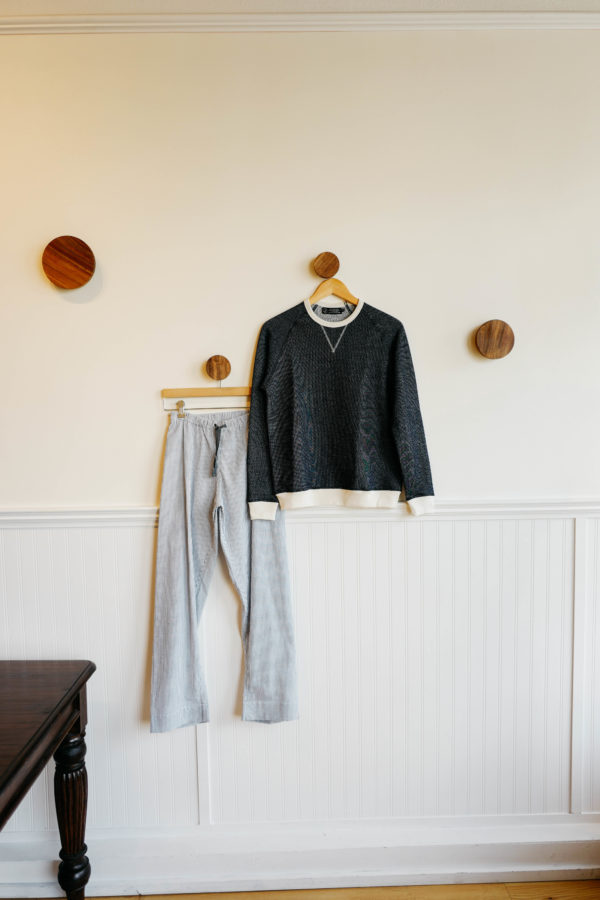

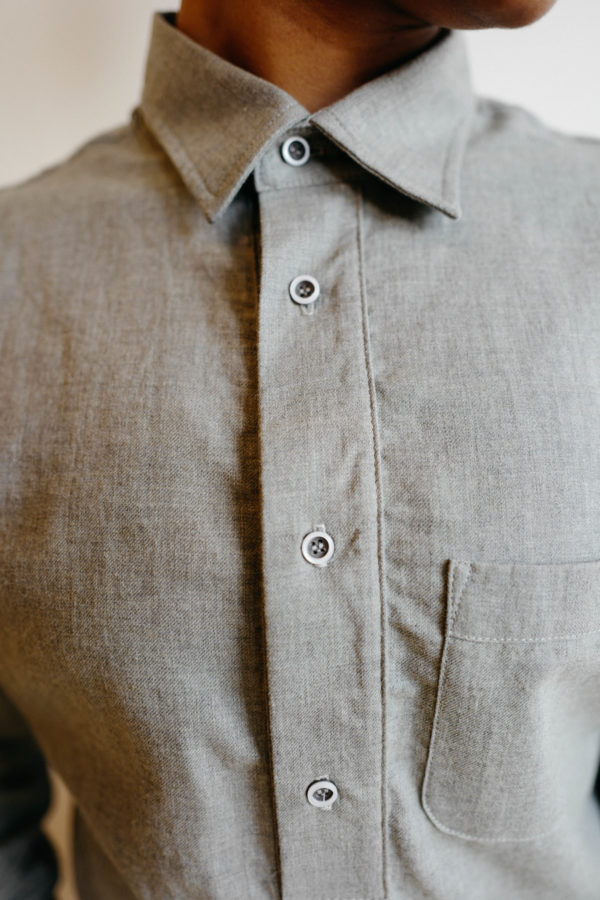

What should women know about proper fit?
The most important thing women should know about fit is that it has nothing to do with them. Clothing companies use sizing charts that contradict each other all day long; they don’t correspond and are not based on bodies, they’re based on algorithms or in some cases, just really old math. Also, fit is subjective. Yes, there’s clearly a point at which something is just categorically too big, but usually fit is much more nuanced than people think— something might “fit” but feel too tight for the amount of curve you like to show. Or maybe your mom thinks it fits but you like things to accentuate your shape more— whose to say? So we don’t trade in “proper” fits. What we do is measure large groups of real women and come up with real, data-driven averages to build our clothes around. This allows us to offer sizing charts (one for every piece) that not only work, but make room for sizing preferences so women can reliably decide what best suits their needs and wants. Everything is based on our customers’ own measurements, so they can easily find their preferred size for their preferred look and feel. No returns. No trips to the tailor.
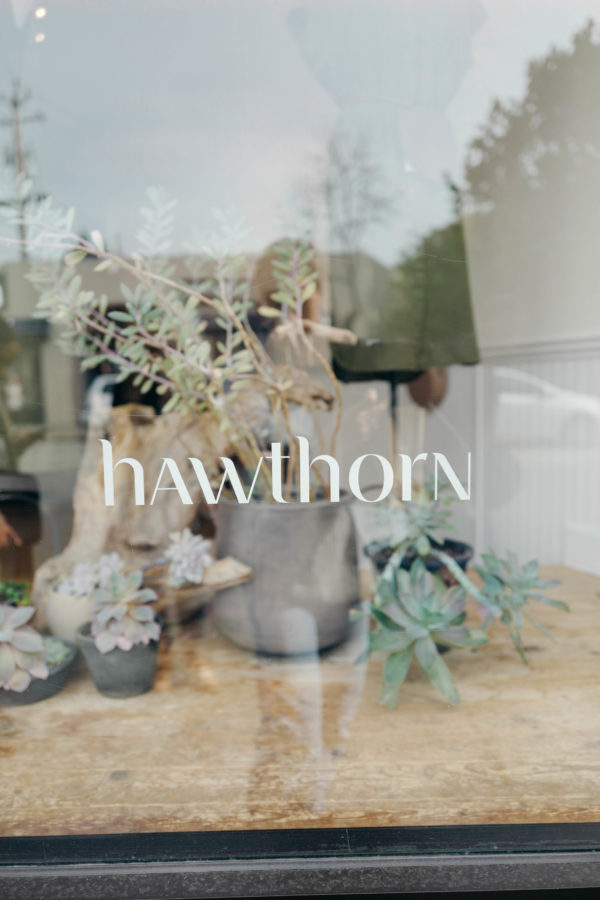
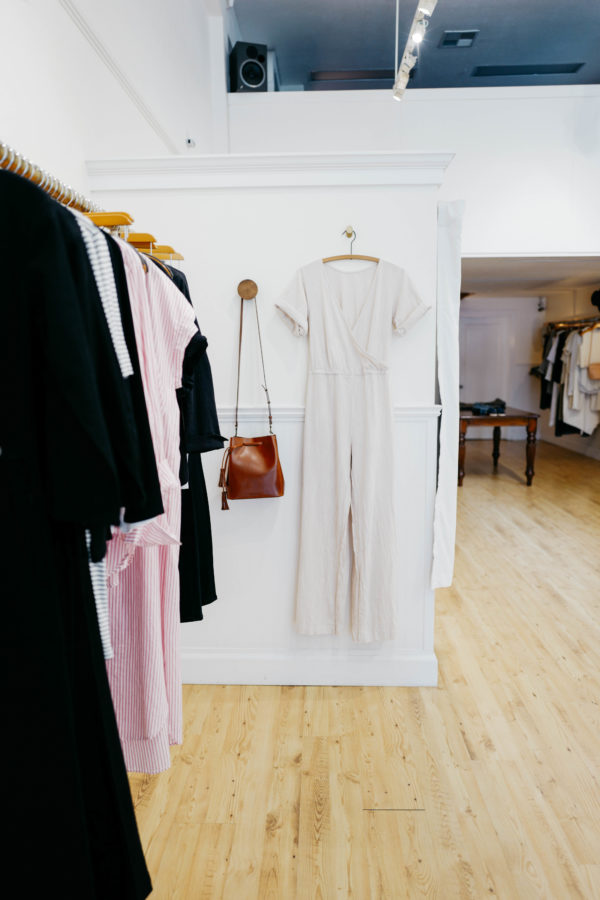
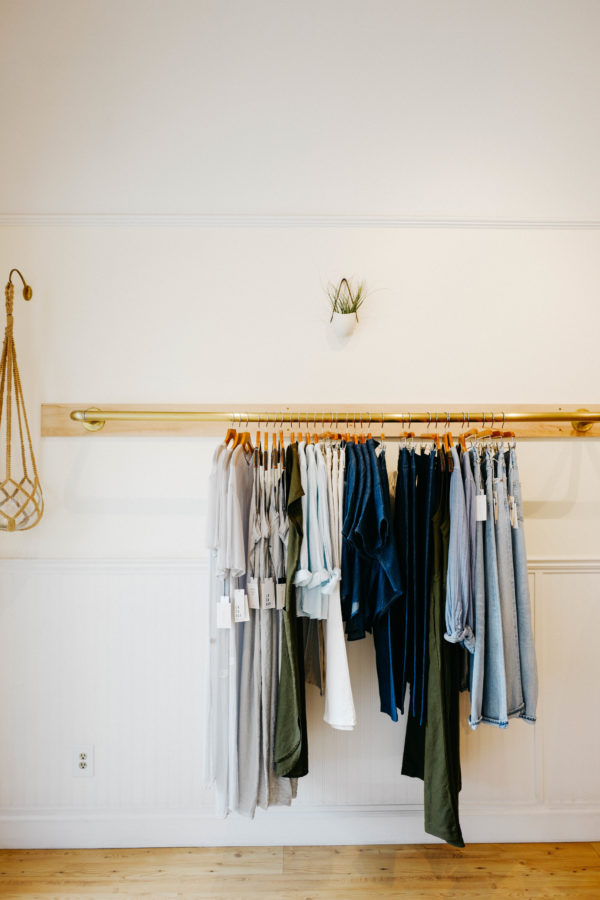
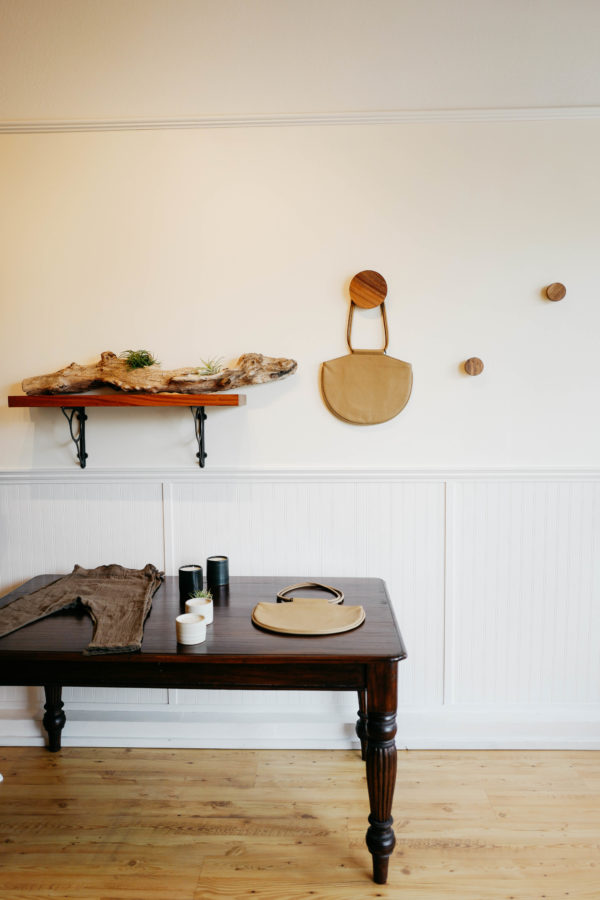
What would we be surprised to know about how clothes are made?
There’s a lot— it’s a shocking industry— but we’ll stick to three heavy-hitters:
Your clothes are ALL made by people. Often folks think that only “sweatshops” have rows of sewing machines attended by humans at work, and that at “ethical” places, things are automated. This is not true. There are no automated clothing-making machines out there. Every piece you buy was sewn by a person. The issue then is not that those people are doing the sewing, it’s how, how are they treated, how are they paid, how old are they, how are they protected. For example, many manufacturers pay their employees by the piece, which contributes to exploitation and low quality goods. So things aren’t as simple as you might imagine, there’s a lot of research involved.
Those little holes you get in that super-soft Tee from J Crew aren’t from your jeans button, they are the result of a chemical enzyme that wears the fibers of low-grade quality down until they soften, allowing companies to buy extremely cheap materials and make them feel supple in-store. The only trouble being, the fabric is destroyed in the process, making it prone to holes after just a single wash. So you waste money and your near-disposable clothing ends up in a land fill very quickly.
And lastly, there is no reporting required on any of this. Unlike your food which the FDA and other agencies require people to report on, the garment industry is like the wild west. It’s where food was in the middle of last century. And that should worry people very much, but right now, it doesn’t, because people don’t think of clothing as agricultural products, but they are.
What is your greatest source of inspiration?
These days, we’re all about fighting the good fight. There is so much junk in the world, so many objects of poor quality circulating around and messing up our planet, we’re inspired to do better, to be better and help people have another option. To us, making objects that last, that can age and patina with you, that can start well and grow into something like an heirloom, with history and beauty and time, that’s a way to change the world. It’s a small way, but it matters, just like all the other small ways. We believe in working well, on behalf of the planet, on behalf of the incredible people who supply our cottons and threads and buttons, on behalf of a world we want, where rampant consumerism has been replaced by measured, intentional collecting of objects that last.
That’s what inspired us and keeps us going, even when this project gets really hard, and it sure does, we remember what we’re working for.
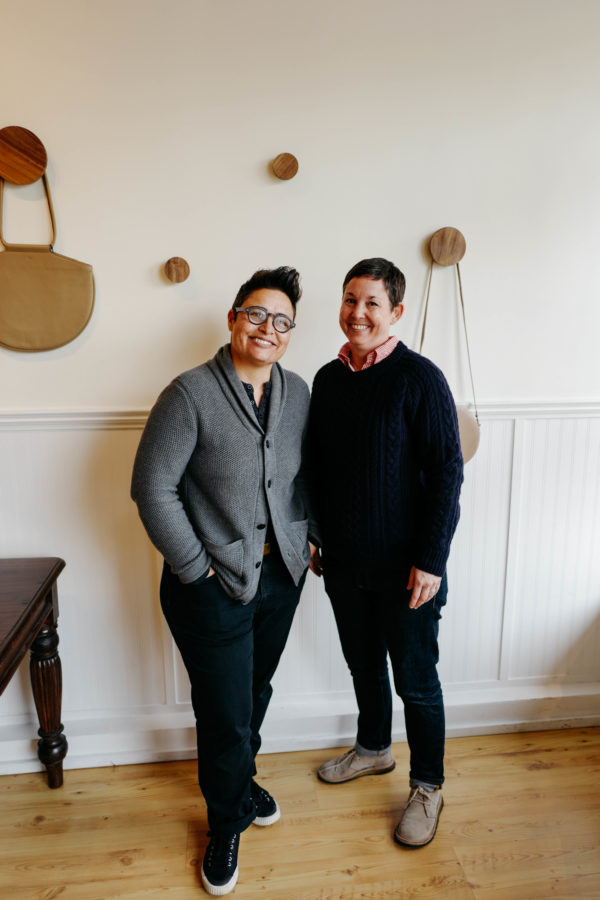
What do you hope to do next?
In practical terms, we’ll be launching a new “Heritage Collection,” a small-batch collection of pieces made from textiles so special, we could only make around 30 of each piece. It’s all about honoring the rarity and gift of a truly unique fabric, even if we can’t get enough to make as many as we can in our Classic Collection. It lets us spread our wings, experiment with new styles, and bring our customer something nearly one of a kind. We are also experimenting with thoughtful ways to use fabric scraps created during manufacturing which we hope will get us closer to our zero-waste goals.
In more existential terms, we hope to keep educating people on the realities and woes of the fashion industry and encouraging them to think more and better about what they buy and put on their bodies. Slow fashion is new, but it is happening, and we’re proud to be on the bleeding edge. We want to do our best to not only support our own work, but the work of the other talented people working for a paradigm shift in the garment world. We are little but we are mighty!
I am so inspired by Noushie and Ronda. With my love for minimal, timeless style (as you might have spied here) they’re speaking my style language and they’re attempting to make the world better too. One perfect shirt at at a time.


Loved this article! Will check out the clothing line! I was wondering why my tee shirts all have little holes near the waist! Makes sense now!
Where can you buy this brand?
you can find them at https://www.eightsand.com/